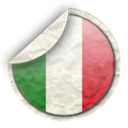Milano da conoscere - Piazze, vie e la storia
Milan to know - Squares, streets and the history
 Monumento a Napoleone III - Urban Tour
Monumento a Napoleone III - Urban Tour
Il monumento a Napoleone III e all'esercito francese è un monumento commemorativo posto nel Parco Sempione di Milano, realizzato come ringraziamento a Napoleone III e ai caduti francesi nella battaglia di Magenta (4 giugno 1859) e nella battaglia di Solferino (24 giugno 1859). L'opera, iniziata nel 1873, poté essere posta nel parco solo nel 1927 a causa di opposizioni politiche.
La statua in bronzo posta sulla sommità rappresenta l'imperatore Napoleone III a cavallo, in uniforme militare, nell'atto di salutare la folla protendendo il cappello nella mano destra.
La posa è ripresa da un dipinto di Giacomo Mantegazza che raffigura l'ingresso a Milano di Vittorio Emanuele II e Napoleone III a Milano dall'Arco della Pace dopo la battaglia di Magenta. La stessa posa è raffigurata in un affresco all'interno della torre monumentale di San Martino della Battaglia.
Solo nella riunione del 14 dicembre 1925 il Consiglio comunale su invito della giunta guidata da Luigi Mangiagalli stabilì di porre definitivamente il monumento sul Monte Tordo al Parco.
Le varie parti vennero trasportate e montate tra il 26 e il 27 febbraio 1927 senza alcuna inaugurazione ufficiale.

L'Esposizione del 1881 e la mancata realizzazione
In occasione dell'Esposizione Nazionale del 1881 tenuta a Milano, la statua venne posizionata nel padiglione delle belle arti nel cortile del Palazzo del Senato. Al termine dell'esposizione rimase nel cortile in attesa del completamento del basamento.
Il 29 dicembre 1886 ci fu un'animata riunione del Consiglio comunale per l'accettazione ufficiale del monumento. Venne stabilito di aggiungere un sottobasamento su cui porre lastre in bronzo con i nomi di ufficiali e soldati francesi caduti nel 1859; come posizione definitiva venne stabilito lo spazio tra la Piazza d'Armi (il Parco) e l'Arco della Pace. I consiglieri radicali Carlo Antongini, Napoleone Perelli e Giuseppe Cristoforo Ferrario si dimisero per protesta.
Nel 1898, al completamento di tutte le parti del basamento, venne presentato al consiglio il rendiconto.
La statua rimase al Palazzo del Senato e le altre parti del monumento vennero «accatastate nel gran cortile del Castello Sforzesco in un capannone addossato ad una delle cortine».
Nel 1906 venne organizzata nella sala della Rocchetta al Castello Sforzesco un convegno dei veterani delle guerre d'indipendenza e vennero esposti i bronzi laterali del monumento, la lastra con il proclama e le otto corone bronzee con i nomi dei generali e dei colonnelli francesi. In previsione delle celebrazioni nel 1909 del cinquantesimo anniversario delle battaglie del 1859, ci furono nuove discussioni sul posizionamento del monumento.
L'opposizione alla sua realizzazione si ripresentò tramite un telegramma di sedici senatori della Terza Repubblica francese e tramite minacce al sindaco Ettore Ponti di «fatti gravissimi e violenti», tanto che egli si dimise dal comitato per le celebrazioni il 22 dicembre 1908.
Il 9 giugno 1909 durante la commemorazione della battaglia di Mentana ci fu un ricordo anche per Napoleone III e durante una sfilata di fronte al monumento a Vittorio Emanuele II «rivoluzionari e anarchici» passarono con le bandiere capovolte per protesta.
Curiosità
Il 1 maggio 1927 ci fu un attentato senza vittime con un'esplosione presso il monumento; ne fu ritenuto responsabile Giobbe Giopp.
Nel gennaio 1932 fu sottratta la corona in bronzo dedicata al colonnello Denis de Senneville; fu ripristinata nel 1938 per volontà del console francese, dopo alcune difficoltà nell'identificare il nome del colonnello.
Il cache
Camuffo chiocciola - Vedi foto spoil
 Monument to Napoleone III - Urban Tour
Monument to Napoleone III - Urban Tour
The monument to Napoleon III and the French army is a memorial monument located in the Sempione Park in Milan, realized as thanks to Napoleon III and the French fallen in the battle of Magenta (June 4, 1859) and the battle of Solferino (June 24, 1859) . The work, begun in 1873, could only be placed in the park in 1927 due to political opposition.
The bronze statue on the top represents the emperor Napoleon III on horseback, in a military uniform, in the act of greeting the crowd, extending his hat into his right hand.
The pose is taken from a painting by Giacomo Mantegazza depicting the entrance to Milan of Vittorio Emanuele II and Napoleon III in Milan from the Arco della Pace after the battle of Magenta. The same pose is depicted in a fresco inside the monumental tower of San Martino della Battaglia.
Only at the meeting of December 14, 1925, the city council, at the invitation of the junta led by Luigi Mangiagalli, decided to place the monument on Monte Tordo at the park definitively.
The various parts were transported and assembled between 26 and 27 February 1927 without any official inauguration.

The 1881 Exposition and the failure to complete it
On the occasion of the National Exhibition of 1881 held in Milan, the statue was placed in the pavilion of fine arts in the courtyard of the Palazzo del Senato. At the end of the exhibition he remained in the courtyard awaiting completion of the basement.
On December 29, 1886, there was a lively meeting of the City Council for the official acceptance of the monument. It was decided to add a sub-base on which to put bronze plates with the names of French officers and soldiers fallen in 1859; as a definitive position the space was established between the Piazza d'Armi (the Park) and the Arco della Pace. The radical advisors Carlo Antongini, Napoleone Perelli and Giuseppe Cristoforo Ferrario resigned in protest.
In 1898, upon completion of all the parts of the basement, the report was presented to the council.
The statue remained in the Palazzo del Senato and the other parts of the monument were "piled up in the large courtyard of the Castello Sforzesco in a shed leaning against one of the curtains".
In 1906 a conference of the veterans of the independence wars was organized in the Rocchetta room at the Castello Sforzesco. The lateral bronzes of the monument, the plate with the proclamation and the eight bronze crowns were displayed with the names of the generals and the French colonels. In anticipation of the celebrations in 1909 of the fiftieth anniversary of the battles of 1859, there were new discussions about the positioning of the monument.
The opposition to its realization came back through a telegram of sixteen senators of the Third French Republic and through threats to the mayor Ettore Ponti of "serious and violent facts", so that he resigned from the committee for the celebrations on December 22, 1908.
On 9 June 1909 during the commemoration of the battle of Mentana there was also a memory for Napoleon III and during a parade in front of the monument to Victor Emmanuel II "revolutionaries and anarchists" passed with the flags turned upside down in protest.
Curiosity
On May 1, 1927 there was a victimless attack with an explosion at the monument; Giobbe Giopp was held responsible for it.
In January 1932, the bronze crown dedicated to Colonel Denis de Senneville was subtracted; it was restored in 1938 by the will of the French consul, after some difficulties in identifying the name of the colonel.
The cache
Snail camouflage - See spoil photo